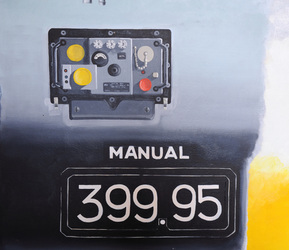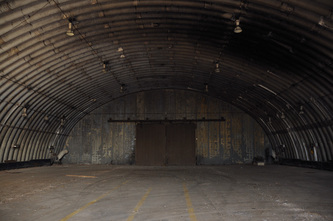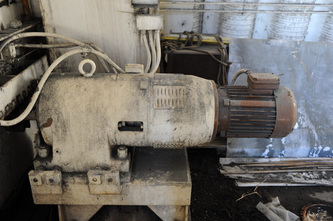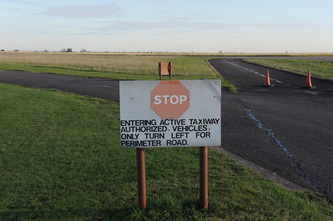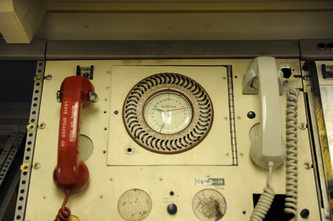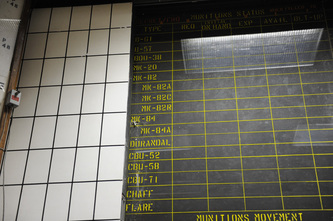RAF Upper Heyford Base Tour
RAF Upper Heyford is an airfield that holds fond memories for me. I used to go there during the mid-1980s and watch the F111s as they carried out their routine training. I went to the airshows, and I was there the day after the raids on Libya. It was very quiet that day, and it was strange to think that the base's aircraft had been to war the previous evening.
When I had the opportunity to tour the base in November 2010, I jumped at the chance. I was pleased to see not much had changed. Devoid of the sound of jet engines and afterburners, it was tranquil. Very much like it was after the Libyan raid, it is great to see so much of the airfield is still intact.
Hopefully, one day it may come to pass that Upper Heyford is preserved as an icon of the Cold War. Until then, please enjoy the following photographs, which show just a little of what remains.
When I had the opportunity to tour the base in November 2010, I jumped at the chance. I was pleased to see not much had changed. Devoid of the sound of jet engines and afterburners, it was tranquil. Very much like it was after the Libyan raid, it is great to see so much of the airfield is still intact.
Hopefully, one day it may come to pass that Upper Heyford is preserved as an icon of the Cold War. Until then, please enjoy the following photographs, which show just a little of what remains.
A Brief History Of Upper Heyford -
Upper Heyford opened as an airfield in 1918 and from then until its closure in 1994 had a long and varied career. The field started flying with the fledgling Royal Air Force and was used throughout the war. With the coming of the Cold War, the base was taken over by America's Strategic Air Command (SAC) in May 1951. Runway lengthening took place with Boeing KB-29Ps tanker aircraft arriving in December 1951. In June 1953, the first Boeing B-47s bombers arrived, making Upper Heyford a very noisy and smoky place to be. The B-47s were nuclear-capable and stayed until March 1965, when the SAC mission ended, and the base was taken over by the United States Air Force Europe (USAFE). McDonnell RF-101C Voodoo aircraft of the 66th Tactical Reconnaissance Wing flew from the airfield until the squadron disbanded in April 1970.
Next came the 20th Tactical Fighter Wing with their General Dynamics F-111E Aardvark fighter bombers. These were later joined by the ECM version of the F-111, the EF-111A Raven, a potent electronic countermeasures aircraft. It is reputed that four EF-111As flying over Europe could effectively shut down all communications and radar coverage. EF-111As took part in the bombing of Libya - Operation El-Dorado Canyon in 1987, where an F-111F from Lakenheath was lost during the mission. I was at Upper Heyford the morning after this mission which was a surreal moment for me. The F-111s of both varieties from Upper Heyford were used during the Gulf War in 1991, flying some missions as low as 200 feet using their terrain-following radar.
Upper Heyford's days were numbered with the end of the Cold War, with the last three of the wings aircraft leaving on 7 December 1993. One F-111E, 68055, was flown to the Museum at Duxford, where it resides today. Following closure, the runways were used to house large numbers of unsold cars. Today the base is pretty much intact and is home to various commercial activities.
I remember well the air shows held at the base as it was like a little bit of America in England. Ice Cold Budweiser beer, proper burgers with friendly American crews stating such facts as "hey bud, you look like you could use a burger and a beer" Very frequently, I took up the offer. Some shots of the air shows held here in the 80s can be found here: Upper Heyford Airshow
Upper Heyford opened as an airfield in 1918 and from then until its closure in 1994 had a long and varied career. The field started flying with the fledgling Royal Air Force and was used throughout the war. With the coming of the Cold War, the base was taken over by America's Strategic Air Command (SAC) in May 1951. Runway lengthening took place with Boeing KB-29Ps tanker aircraft arriving in December 1951. In June 1953, the first Boeing B-47s bombers arrived, making Upper Heyford a very noisy and smoky place to be. The B-47s were nuclear-capable and stayed until March 1965, when the SAC mission ended, and the base was taken over by the United States Air Force Europe (USAFE). McDonnell RF-101C Voodoo aircraft of the 66th Tactical Reconnaissance Wing flew from the airfield until the squadron disbanded in April 1970.
Next came the 20th Tactical Fighter Wing with their General Dynamics F-111E Aardvark fighter bombers. These were later joined by the ECM version of the F-111, the EF-111A Raven, a potent electronic countermeasures aircraft. It is reputed that four EF-111As flying over Europe could effectively shut down all communications and radar coverage. EF-111As took part in the bombing of Libya - Operation El-Dorado Canyon in 1987, where an F-111F from Lakenheath was lost during the mission. I was at Upper Heyford the morning after this mission which was a surreal moment for me. The F-111s of both varieties from Upper Heyford were used during the Gulf War in 1991, flying some missions as low as 200 feet using their terrain-following radar.
Upper Heyford's days were numbered with the end of the Cold War, with the last three of the wings aircraft leaving on 7 December 1993. One F-111E, 68055, was flown to the Museum at Duxford, where it resides today. Following closure, the runways were used to house large numbers of unsold cars. Today the base is pretty much intact and is home to various commercial activities.
I remember well the air shows held at the base as it was like a little bit of America in England. Ice Cold Budweiser beer, proper burgers with friendly American crews stating such facts as "hey bud, you look like you could use a burger and a beer" Very frequently, I took up the offer. Some shots of the air shows held here in the 80s can be found here: Upper Heyford Airshow


